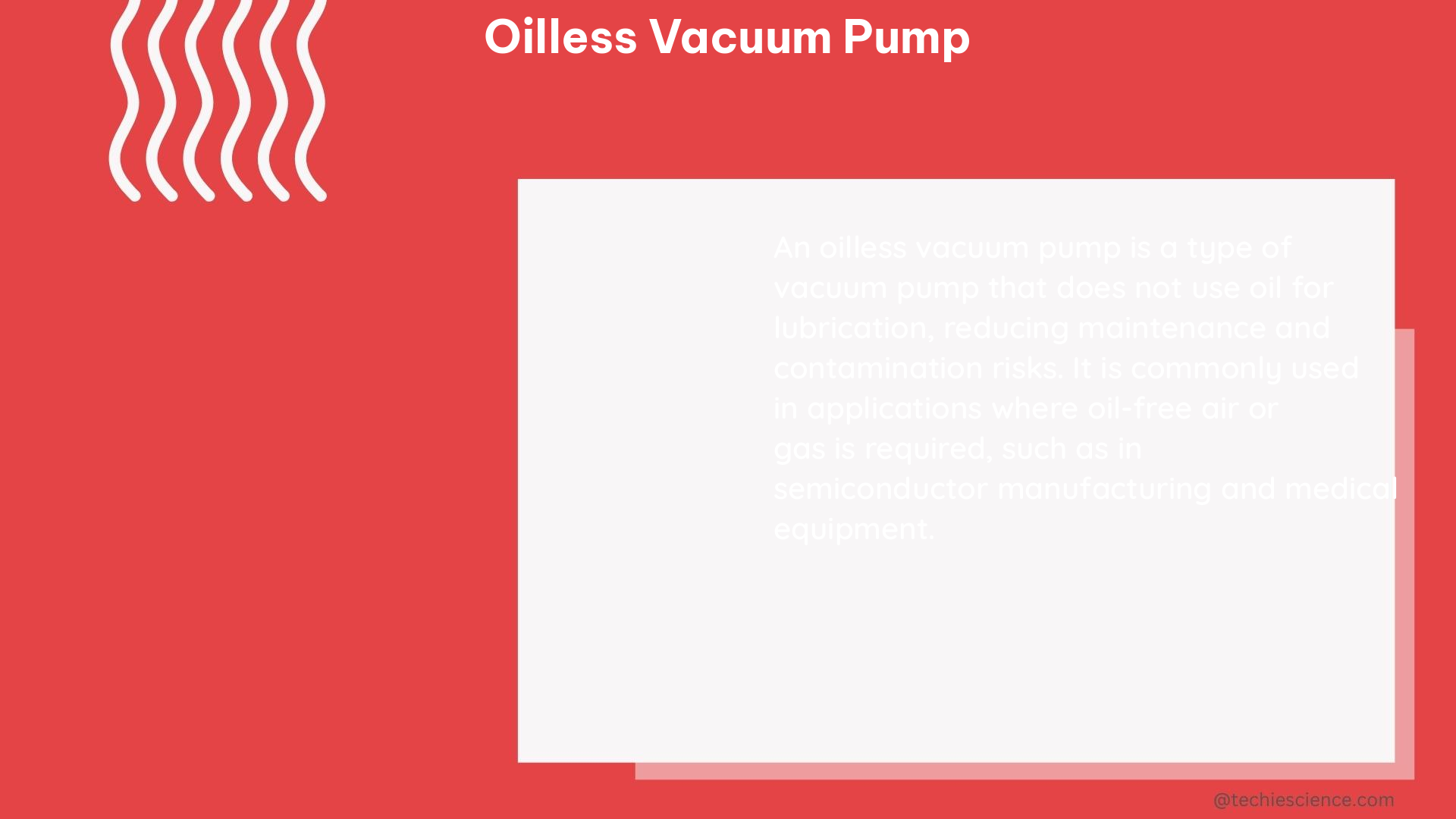The oilless vacuum pump is a versatile and low-maintenance alternative to traditional oil-lubricated vacuum pumps, offering a range of benefits for various applications. Whether you’re a DIY enthusiast, a laboratory technician, or an industrial user, understanding the technical specifications, maintenance requirements, and best practices for oilless vacuum pumps can be crucial for ensuring optimal performance and longevity.
Understanding Oilless Vacuum Pump Technology
Oilless vacuum pumps, also known as dry vacuum pumps, are designed to operate without the need for oil lubrication. This is achieved through the use of specialized materials and engineering techniques that minimize friction and wear, allowing the pump to function effectively without the need for oil.
One of the key advantages of oilless vacuum pumps is their reduced maintenance requirements. Unlike oil-lubricated pumps, which require regular oil changes and monitoring, oilless pumps can operate for extended periods with minimal intervention. This makes them an attractive option for applications where downtime and maintenance costs are critical factors.
Technical Specifications and Performance Characteristics

Oilless vacuum pumps come in a wide range of capacities and performance ratings, catering to diverse application needs. When selecting an oilless vacuum pump, it’s essential to consider the following technical specifications:
- Pumping Speed: Measured in cubic feet per minute (CFM) or liters per minute (LPM), the pumping speed determines the volume of air or gas that the pump can remove from a system.
- Ultimate Vacuum: Expressed in inches of mercury (Hg) or millibars (mbar), the ultimate vacuum level represents the lowest pressure the pump can achieve.
- Horsepower: The motor power of the pump, which affects its overall performance and energy consumption.
- Noise Level: Oilless vacuum pumps can vary in their noise output, which is an important consideration for applications where noise levels need to be minimized.
- Inlet and Outlet Ports: The size and configuration of the pump’s inlet and outlet ports determine the compatibility with your specific system.
For example, the Oil-less Vacuum Pump and Compressor from Carolina Biological Supply has a pumping speed of 5 CFM and an ultimate vacuum of 29.92 inches of Hg, making it suitable for laboratory and educational applications such as freeze-drying, vacuum filtration, and gas compression.
Maintenance and Troubleshooting
Proper maintenance is crucial for ensuring the longevity and optimal performance of your oilless vacuum pump. Here are some key maintenance tasks and troubleshooting tips:
- Air Flushing: Regularly flushing the pump with air after each use can help prevent moisture buildup and extend the pump’s lifespan.
- Continuous Vacuuming: Set the pump to continue vacuuming after the load is complete to prevent moisture accumulation.
- Filter Replacement: Replace the pump’s inlet filter as recommended by the manufacturer to maintain optimal airflow and prevent contaminant buildup.
- Vibration Monitoring: Regularly check the pump for any unusual vibrations, which could indicate a problem with the bearings or other internal components.
- Electrical Checks: Ensure that the pump’s electrical connections are secure and that the motor is functioning correctly.
In the event of a pump failure, it’s essential to troubleshoot the issue promptly to minimize downtime. Common problems may include:
- Reduced pumping speed or vacuum level
- Excessive noise or vibration
- Overheating
- Electrical issues
Refer to the manufacturer’s troubleshooting guide or consult a professional for assistance in diagnosing and resolving any issues with your oilless vacuum pump.
Choosing the Right Oilless Vacuum Pump for Your Application
When selecting an oilless vacuum pump for your DIY project or application, consider the following factors:
- Application Requirements: Determine the specific vacuum requirements, such as the desired pumping speed, ultimate vacuum level, and the volume of the system being evacuated.
- Compatibility: Ensure that the pump’s inlet and outlet ports, as well as its overall dimensions, are compatible with your system.
- Noise and Vibration: If noise or vibration is a concern, look for pumps with low-noise or vibration-dampening features.
- Energy Efficiency: Consider the pump’s power consumption and energy efficiency, especially for applications with extended runtime.
- Maintenance and Durability: Evaluate the pump’s maintenance requirements and expected lifespan to ensure it aligns with your needs and budget.
By carefully considering these factors, you can select the most suitable oilless vacuum pump for your DIY project or application, ensuring optimal performance, efficiency, and longevity.
Conclusion
Oilless vacuum pumps offer a convenient and low-maintenance solution for a wide range of applications, from DIY projects to industrial processes. By understanding the technical specifications, maintenance requirements, and best practices for oilless vacuum pumps, you can ensure that your pump operates at peak performance and delivers reliable results for years to come.
Whether you’re a seasoned DIY enthusiast or a professional in the field, this comprehensive guide on oilless vacuum pumps should provide you with the knowledge and insights needed to make informed decisions and achieve successful outcomes in your endeavors.
References:
- How long do oil free pumps last? : r/HarvestRight – Reddit. (2022). Retrieved from https://www.reddit.com/r/HarvestRight/comments/whx2x2/how_long_do_oil_free_pumps_last/
- Oil-less Vacuum Pump and Compressor | Carolina Biological Supply. (n.d.). Retrieved from https://www.carolina.com/physical-science-instruments-and-equipment/oil-less-vacuum-pump-and-compressor/752830.pr
- How to Choose a Vacuum Pump for Composites. (n.d.). Retrieved from https://explorecomposites.com/articles/tools-and-equipment/buying-a-vacuum-pump/
- Vacuum Pump Safety – Lab Manager. (n.d.). Retrieved from https://www.labmanager.com/vacuum-pump-safety-19634
- Oil-Less, Maintenance-Free Pump for Harvest Right Freeze Dryers – YouTube. (2017). Retrieved from https://www.youtube.com/watch?v=A_ar8ysARR4

The lambdageeks.com Core SME Team is a group of experienced subject matter experts from diverse scientific and technical fields including Physics, Chemistry, Technology,Electronics & Electrical Engineering, Automotive, Mechanical Engineering. Our team collaborates to create high-quality, well-researched articles on a wide range of science and technology topics for the lambdageeks.com website.
All Our Senior SME are having more than 7 Years of experience in the respective fields . They are either Working Industry Professionals or assocaited With different Universities. Refer Our Authors Page to get to know About our Core SMEs.